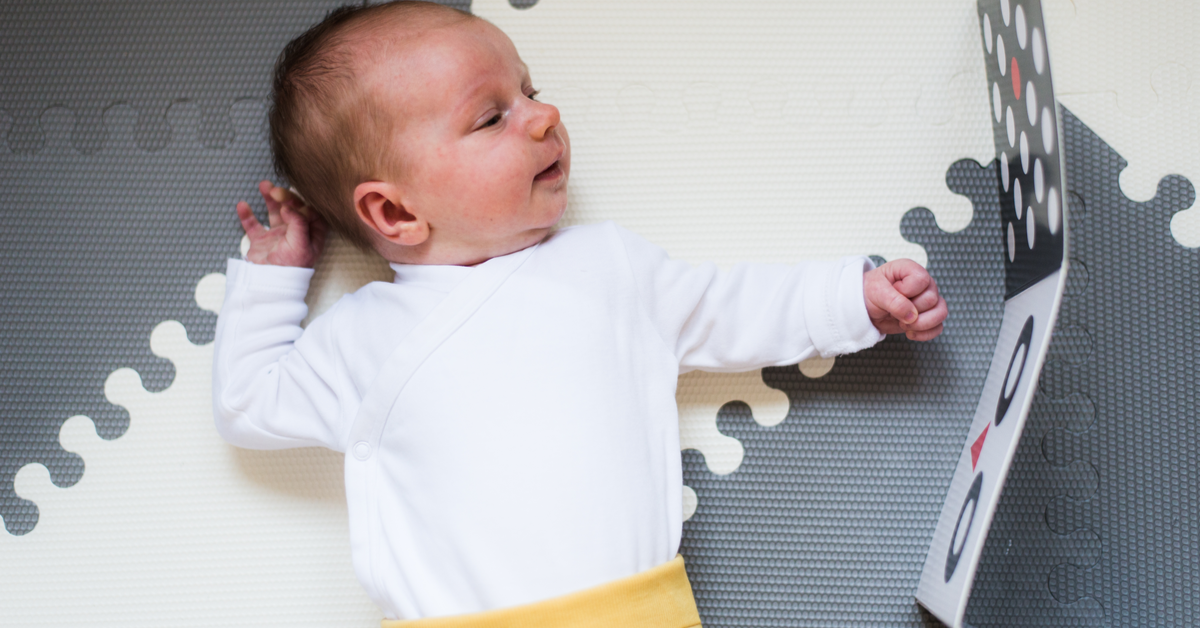Many toys support your baby’s sensory, cognitive, physical and language development from birth. Choosing toys suitable for your baby’s age and developmental stage is crucial. In this article, we discuss the advantages of the baby toys Black-and-White Baby Cards set, containing twenty black-and-white animal images with their Turkish and English names, for your newborn baby’s development.
- Cognitive Development
These cards are a great learning tool for your baby! Your baby learns new information and skills in the sequence of Bloom’s Taxonomy. This learning pyramid hierarchically orders thinking processes, meaning that your baby acquires high-level cognitive skills step by step. He first remembers, then understands, applies, and analyses, and finally evaluates and creates. While remembering is the first step of learning, creation is processing information in a new form. A newborn finds himself at the pyramid’s base, the level of remembering. When playing with the baby toys Black-and-White Baby Cards, your baby will memorise the images on the cards, which stimulates learning. Frequently repeating the games facilitates this. In addition, the baby toys Black-and-White Baby Cards help improve your baby’s hand-eye coordination. You can also gradually increase his attention span and focus. Finally, when acquiring new information, your baby uses his five senses, seeing, hearing, touching, tasting, and smelling, and the baby toys Black-and-White Baby Cards also contribute to his sensory development.
- Sensory Development
Immediately after birth, your baby’s eyesight is not fully developed yet. The images he sees are blurry. In addition, he sees only black, white, and grey, as the nerve cells in his eyes that allow us to see different colours are not active yet. You can help improve your baby’s vision by playing with the baby toys Black-and-White Baby Cards. Giving your baby the cards to touch and hold also stimulates his sense of touch. Adding sound toys such as rattles, ringing balls, or musical toys to the game can activate your baby’s sense of hearing.
- Language Development
The baby toys Black-and-White Baby Cards, contribute to language development as they stimulate you to communicate with your baby. In the first months, your baby’s body language, cries, gestures, and facial expressions are a form of communication. In the same way, you can attract his attention when using the cards by adding gestures, facial expressions, and different tones of voice. You can tell stories and make sounds related to the images on the card. For example, while showing the image of a bird, you can make bird sounds and talk about birds. If you have a plush bird toy at home, you can help your baby embody this knowledge by showing it and letting him feel it.
- Physical Development
The development of the brain and body must be stimulated simultaneously to fully support your baby’s development. To activate the different parts of your baby’s brain, you can use the baby toys Black-and-White Baby Cards while offering physical and gross motor development stimuli. For instance, while your baby is lying on his back, you can hold the cards in front of him, or you can put the cards in front of him during tummy time. Furthermore, he will develop his hand-eye coordination and gross motor skills by trying to reach for the cards.
In short, the baby toys Black-and-White Baby Cards are perfect for contributing to your newborn’s cognitive, sensory, language and physical development. You can choose which developmental area you want to focus on each time you play. As your baby grows, you can also invent stories about the animals on the cards, create artwork, and have fun acting them out.
PLAY SUGGESTIONS
Learn from your voice!
As you show the black-and-white cards, you can imitate animal sounds to holistically support your baby’s sensory, visual, and auditory development.
- Bark like a dog.
- Meow like a cat.
- Roar like a lion.
- Whoop like a monkey.
- Caw like a crow.
- Quack like a duck.
- Talk like a parrot.
GUESS!
When your baby grows, you can start playing guessing games to help develop your baby’s high-level cognitive skills, increase his focus, and strengthen his memory. You can ask fun questions about the animals on the cards and make the questions easier or harder according to your child’s age and developmental level.
For example:
- He loves playing with a tennis ball and wags his tail when he is happy. Which animal is it? Answer: It’s a dog!
- It grows in its mother’s pouch. Which animal is it? Answer: It’s a kangaroo!
- It lives in the sea and has many arms. Which animal is it? Answer: It’s an octopus!
- He is the king of the forest. Which animal is it? Answer: It’s a lion!
- It loves to eat bamboo shoots. Which animal is it? Answer: It’s a panda!
- He loves to drink milk and has whiskers. Which animal is it? Answer: It’s a cat!
- He is famous for his large trunk. Which animal is it? Answer: It’s an elephant!
- He is famous for his long neck. Which animal is it? Answer: It’s a giraffe!
- It is famous for its black-and-white stripes. Which animal is it? Answer: It’s a zebra!
- He loves to eat bananas. Which animal is it? Answer: It’s a monkey!
- He has a distinctive waddle and lives on ice. Which animal is it? Answer: It’s a penguin!
- He carries his house on his back. Which animal is it? Answer: It’s a turtle!
- It has a pointed nose and fluffy tail. Which animal is it? Answer: It’s a fox!
- He loves jumping and eating carrots. Which animal is it? Answer: It’s a rabbit!
- It’s a bird that hunts at night. Which animal is it? Answer: It’s an owl!
- It’s a bird that caws. Which animal is it? Answer: It’s a crow!
- The mother swims in the pond with her little ones behind her. Which animal is it? Answer: It’s a duck!
- It’s a bird that repeats what you say. Which animal is it? Answer: It’s a parrot!
- It is the most playful creature of the sea. Which animal is it? Answer: It’s a dolphin!
- He is tiny, has spots on his skin and is endangered. Which animal is it? Answer: It’s a water salamander!
LOOK CAREFULLY!
Using the cards, you can play memory games to strengthen your child’s attention and focus. Give him some time to examine the image on the card. Then turn the card face-down and ask questions about the details in the picture.
- How many lines does the elephant’s trunk have?
- How many hairs does the water salamander have?
- How many ears does the panda have?
- Is the parrot’s mouth open?
- How many legs of the turtle did you see?
- How many eyelashes does the duck have?
- Does the giraffe have a tail?
- How many nostrils does the zebra have?
- What is the dog’s facial expression like?
CLASSIFY!
When your child grows, you can also play classification games. As he learns new information about the animals, he can categorise them according to their characteristics and learn while having fun. You can classify animals according to:
- the number of feet they have;
- where they live (on land/ in the air/ in the water);
- whether they have a tail or not;
- whether their ears are visible or invisible.







